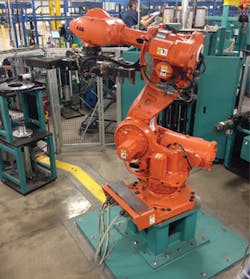Big, transformational projects have an almost irresistible lure for executives looking to make their mark. But as Jeremy Eden and Terri Long write in their book, Low Hanging Fruit, all too often these projects "take longer, have unanticipated risks and have much lower payoffs than expected."
Instead, Eden and Long advocate harvesting lots of small ideas to tackle "the thousands of small solvable problems your employees closest to the work already know are the source of their company's inefficiencies."
That philosophy certainly fits the experience of Scott Fullbright, vice president of operations at Baldor Electric Co., a unit of ABB (IW1000/107). Visionaries like Steve Jobs who can build an Apple Computer from scratch are "extraordinarily rare," he told a group of journalists recently. There are actually more such thinkers than you realize, Fulbright explained, but most of them fail. Those failures cause barely a ripple because they frequently "have nothing to lose."
That wasn't the case at Baldor's 210 plant in Fort Smith, Ark., a showcase electric motor production facility brimming with efficient layout, advanced robotics, visual management and careful attention to ergonomics. The Fort Smith operation was the "core of the business," Fullbright said, not a "burning platform" where change came out of deep, deep trouble.
"We had industry-leading lead times, the best quality in the industry, the number one market position," Fullbright said. "The plant was extraordinarily flexible, able to make an almost unbelievable mix of models of product, producing something in the neighborhood of 5,000 motors a day, 300 different model numbers a day. It had a workforce that was brilliant and cooperative."
But Baldor was committed to keeping a major manufacturing footprint in the United States, and that meant a commitment to continuous improvement. No burning platform was needed, Fulbright said. "When you start smelling smoke, it's time to get to work."
So when the company decided to remodel a distribution center into an exemplary motor manufacturing facility, Fullbright said they started the design process by stepping back and getting some perspective on what they already did well.
Plant officials looked within Baldor for "brilliant ways of doing things" that had not been spread throughout the organization. The planning team also looked beyond their own plant walls at suppliers, competitors and other industries where there were better practices they could adopt.
Next, he said, they dealt with the "irritation factor" -- all those things that employees live with day in and day out, but hate and want to change. Many of the irritants in the Fort Smith plant involved materials movement and ergonomics.
"There was a lot of lifting and moving parts around, a lot of repetitive motion," Fullbright recalled. The first day he entered the plant, he noticed that "half of our labor was spent moving things around." The plant was a complex, cluttered environment that could be difficult to manage. And he said some of the equipment and processes were just not up to meeting the increasingly demanding specs that new products required.
Having gone through this process and gained perspective, Fullbright said, plant officials were ready to deal with their vision for a new manufacturing plant. In other words, he said, "What would we do if we had to start over?"
Baldor managers decided they wanted to be able to build a motor from start to finish in two days. The processes would not require anyone to lift anything heavier than a gallon of milk. Forklifts would be eliminated from the plant floor. Standard work would be established. There would be no going back to engineering to approve an off-spec product because there would now be no deviations from specifications.
The 210 plant represents a more productive, safer and higher quality work environment. "It was a combination of a lot of little things," Fullbright said. "There was really nothing in that plant that had not already been invented."
Baldor may have had no visionary on the lines of a Steve Jobs, but don't let that diminish the brilliance of a team molding scattered small ideas into a powerful whole.
About the Author
Steve Minter
Steve Minter, Executive Editor
Focus: Leadership, Global Economy, Energy
Call: 216-931-9281
Follow on Twitter: @SgMinterIW
An award-winning editor, Executive Editor Steve Minter covers leadership, global economic and trade issues and energy, tackling subject matter ranging from CEO profiles and leadership theories to economic trends and energy policy. As well, he supervises content development for editorial products including the magazine, IndustryWeek.com, research and information products, and conferences.
Before joining the IW staff, Steve was publisher and editorial director of Penton Media’s EHS Today, where he was instrumental in the development of the Champions of Safety and America’s Safest Companies recognition programs.
Steve received his B.A. in English from Oberlin College. He is married and has two adult children.

